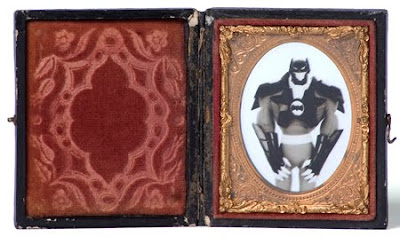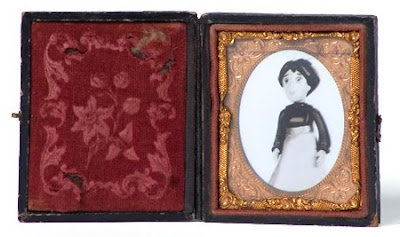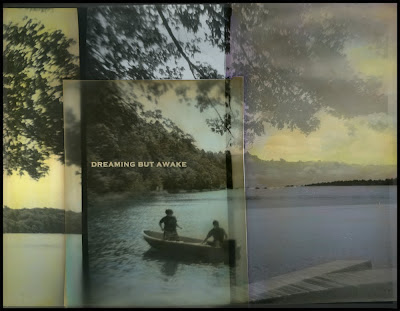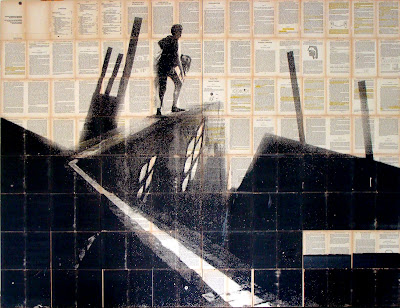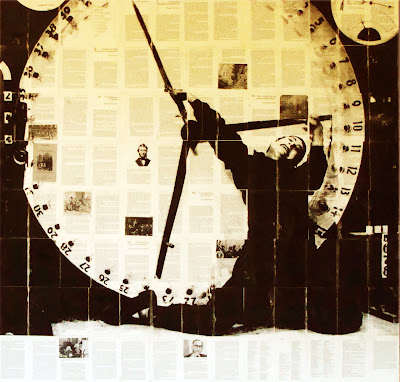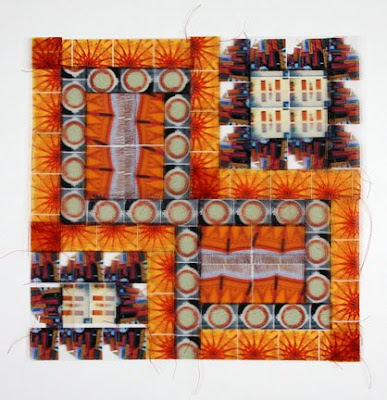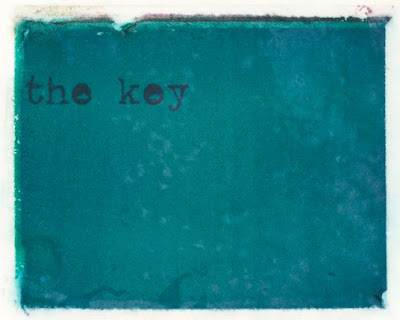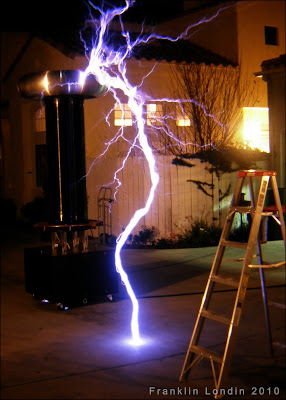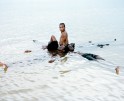Diversity in Development
As part of the Month of Photography in Los Angeles, I am pleased to be included in an interesting exhibition about diverse approaches that photographers take in creating images. Diversity in Development opens this Saturday, April 10, at the Loft at Liz’s in Los Angeles and showcases the work of 8 photographers: Amanda Keller Konya, Aline Smithson, Jad Najjar, Gwen Samuels, Mike Saijo, Paul Papanek, Willa Mamet and Franklin Londin.
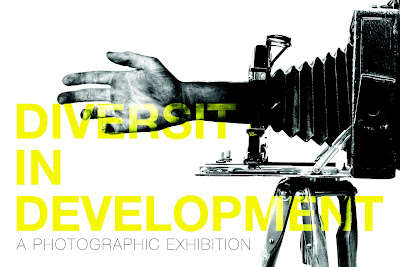
The styles of photography and development range from complex digital 3-D imagery in self-illuminated contraptions, to the most traditional and fundamental form photography taken with film and developed by hand in a dark room. Themes of the photographs explore issues such as the environment, light and form, repetition and cinema.
Amanda Keller-Konya is dedicated to the investigation of the photographic medium, ideas about photography and the photographer him/herself. She takes on the sociopolitical within her work addressing issues such as toxity, school closures, land use and public/private space. Amanda not only is part of Diversity in Development, but is part of a significant exhibition opening earlier in the day, Story of O: Graduate Fine Arts 1989-2009, featuring new work by alumni who attended Otis College of Art and Design’s distinguished Graduate Fine Arts program between 1989 and 2009 and studied under the leadership of artist and Chair Roy Dowell. The exhibition will be held at the Ben Maltz Gallery from April 10 – June 5, 2010 with an opening reception on Saturday, April 10 from 4-6pm. Her series, Specimens, will also be featured in the upcoming slide show event at the Annenberg Space for Photography in Los Angeles on April 22nd, from 7-9pm.
“Specimens” from North America’s Most Polluted River for the 2009/10 MexiCali Biennial. “Specimens,” from North America’s Most Polluted River explores both the New River and the common modes of information through which one comes to know the river. The project presents scientific, journalistic and visual approaches of representation, questioning the hierarchical placement of each mode and its failure to deliver the ever sought after “truth,” or “whole story.” The image component of the project was produced along the access points of the river. The images, along with collected samples of the toxic river water are contained within specimen bottles. The images connote referents of and around the river. In a reversal of the photographic experience, the viewer looks through the river water to access the photographic representation of the referent. 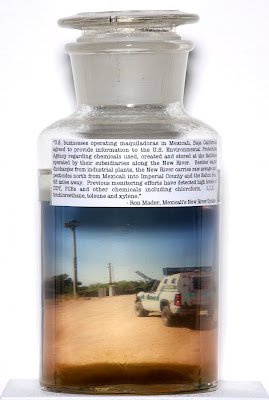
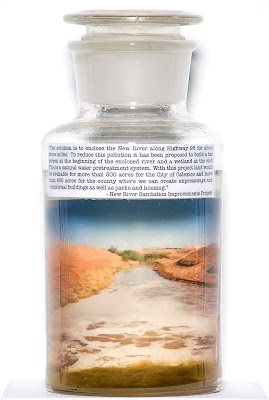
“Recall”, a series of pigment based digital daguerreotypes, documents a selection of toys from the Mattel recall. The series immortalizes the consumer objects that were so quickly discarded and forgotten. In addition to transforming the forgotten into highly fetishized objects, the work references the daguerreotype, a medium that was once often used for postmortem photography of children. The original daguerreotype process itself was also highly toxic; however, authentic daguerreotypes continue to be widely collected today.
Aline Smithson deconstructs the image in her series, Shadows and Stains, by cutting negatives, overlapping images, adding text, and applying washes of oil paint onto silver gelatin prints. The series is a response to the loss of the wet darkroom and her desire to find creativity and a new way of working in the darkroom and with toy cameras.
Mike Saijo explores the notions of “representation and history” by forming constructions and site-specific installations—with the text of actual book pages juxtaposing imagery of historical incidents and events which have had significant local impact. Together, image and text undergo a process of reduction and abstraction, combining to articulate the point that “now” is as much “history” as history is now.
The art-making process involves deconstruction, appropriation, and re-contextualization of text and image. Mike is interested in the continual process of decomposition of meanings which do not correspond to conventional, constructed “reality”, but at the same time create new meaning. His artistic choices are made through a combination of research, hypothesizing, and personal ethics guided by a certain intuitive logic where conventional thought may not apply.
Gwen Samuels‘ technique began with the purchase of antique lace at the flea-marketwhich she printed on transparent film and began to arrange and hand-stitch. This process led to further investigation using a digital camera, creating multiple prints sewn together by hand, like patchwork quilts, forming compound images that hang unframed on the wall.
Paul Papanek works with words and color to discover if the affect of a word can be manipulated by it’s association with color. Using Polaroid 669 film and Fuji film on watercolor paper, his series, Word Play, leaves it up to the viewer to discover personal meaning when words and color are placed on the wall.
Willa Mamet’s images are from her series, Night Bodies. Willa continues to work with film and prints in the traditional darkroom. The photographs are singly exposed 35mm negatives.
Franklin Londin is an avid fan of binocular vision. Born with an eye disease that manifested as a teenager, Franklin found that he had a heightened visual sense that drew him to the active engagement of the eye and the brain, which he explores with stereo photography.
Architect and Photographer, Jad Najjar works with digital images, cropping photographs of old world architectural details in order to create a new way of looking. He continues his process on water color paper with the addition of acrylic paint.
Posts on Lenscratch may not be reproduced without the permission of the Lenscratch staff and the photographer.
Recommended
-
Arnold Newman Prize: C. Rose Smith: Scenes of Self: Redressing PatriarchyNovember 24th, 2025
-
The Aline Smithson Next Generation Award: Emilene OrozcoNovember 21st, 2025
-
MATERNAL LEGACIES: OUR MOTHERS OURSELVES EXHIBITIONNovember 20th, 2025
-
Josh Aronson: Florida BoysNovember 1st, 2025
-
Robert Rauschenberg at Gemini G.E.LOctober 18th, 2025


